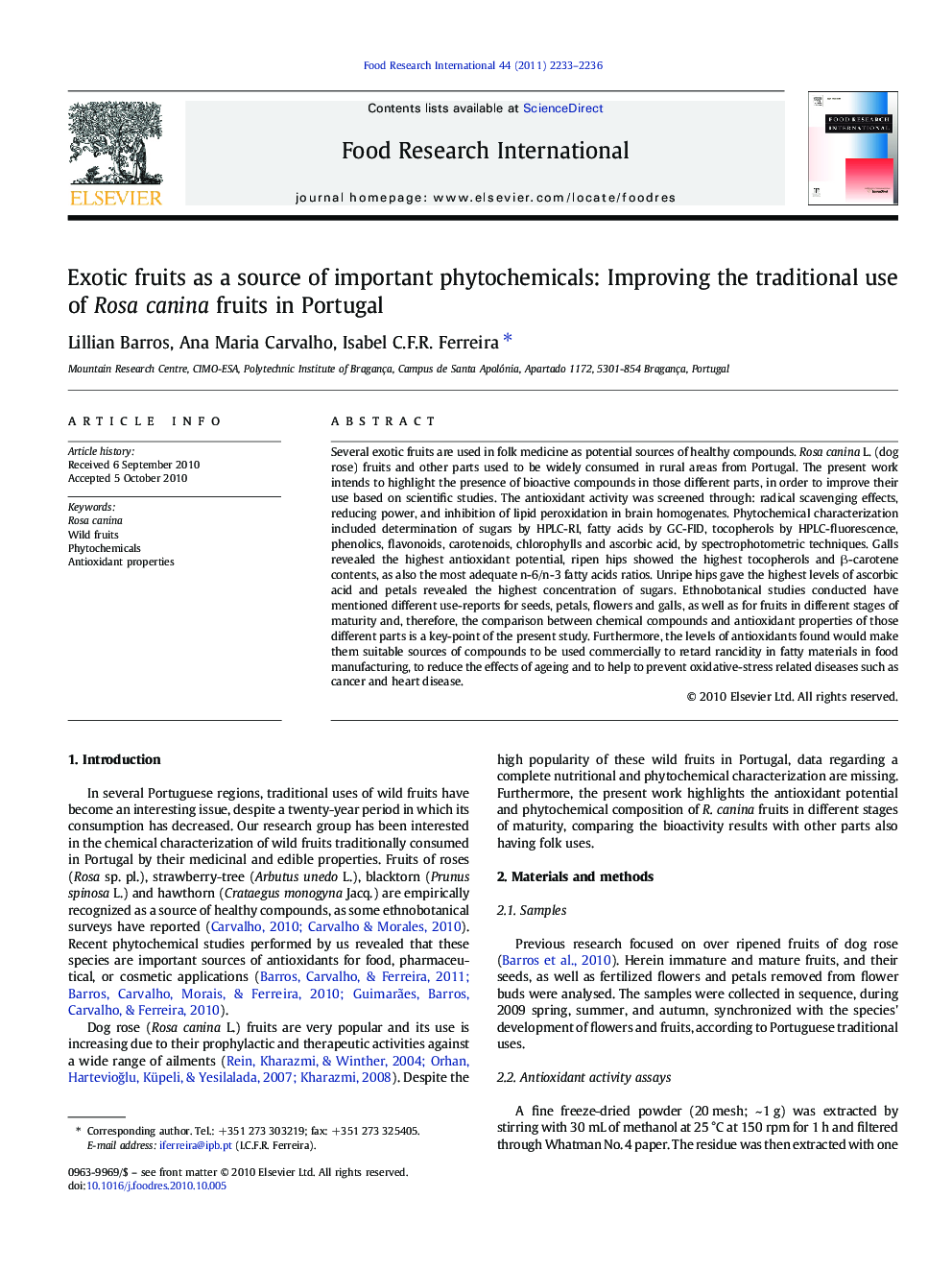| Article ID | Journal | Published Year | Pages | File Type |
|---|---|---|---|---|
| 6399642 | Food Research International | 2011 | 4 Pages |
Several exotic fruits are used in folk medicine as potential sources of healthy compounds. Rosa canina L. (dog rose) fruits and other parts used to be widely consumed in rural areas from Portugal. The present work intends to highlight the presence of bioactive compounds in those different parts, in order to improve their use based on scientific studies. The antioxidant activity was screened through: radical scavenging effects, reducing power, and inhibition of lipid peroxidation in brain homogenates. Phytochemical characterization included determination of sugars by HPLC-RI, fatty acids by GC-FID, tocopherols by HPLC-fluorescence, phenolics, flavonoids, carotenoids, chlorophylls and ascorbic acid, by spectrophotometric techniques. Galls revealed the highest antioxidant potential, ripen hips showed the highest tocopherols and β-carotene contents, as also the most adequate n-6/n-3 fatty acids ratios. Unripe hips gave the highest levels of ascorbic acid and petals revealed the highest concentration of sugars. Ethnobotanical studies conducted have mentioned different use-reports for seeds, petals, flowers and galls, as well as for fruits in different stages of maturity and, therefore, the comparison between chemical compounds and antioxidant properties of those different parts is a key-point of the present study. Furthermore, the levels of antioxidants found would make them suitable sources of compounds to be used commercially to retard rancidity in fatty materials in food manufacturing, to reduce the effects of ageing and to help to prevent oxidative-stress related diseases such as cancer and heart disease.
